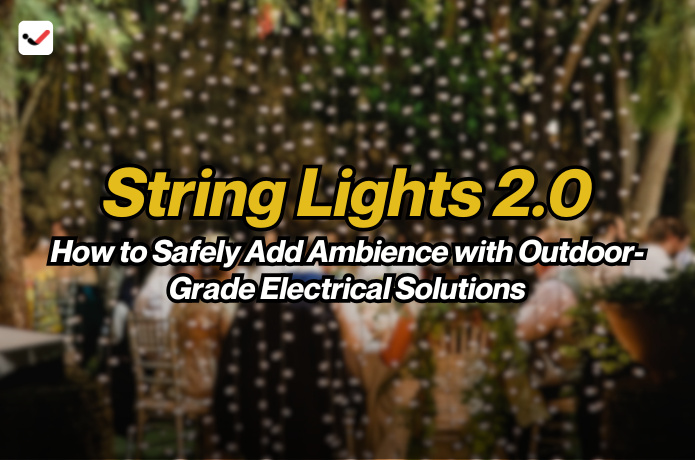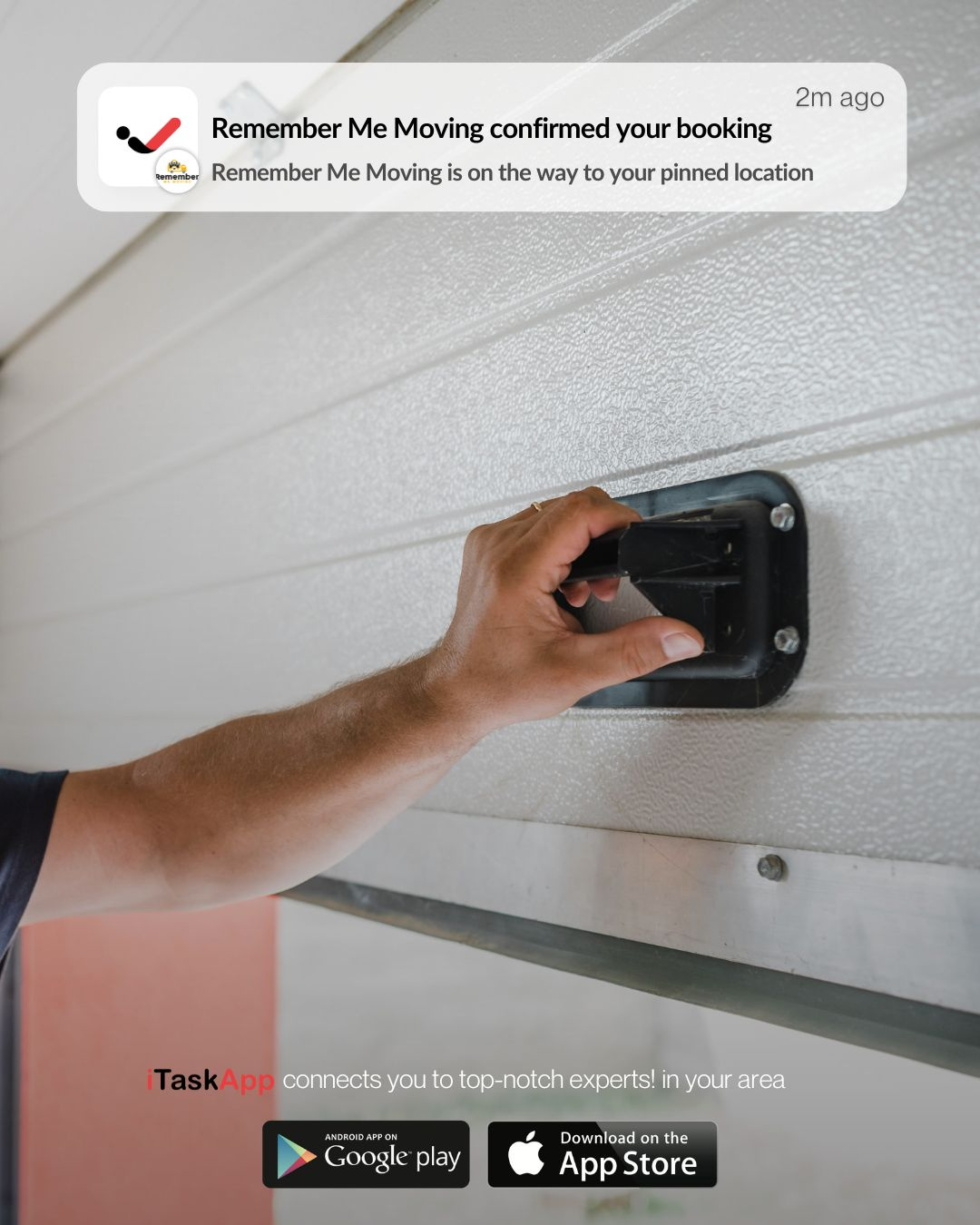String Lights 2.0: How to Safely Add Ambience with Outdoor-Grade Electrical Solutions
String Lights 2.0: How to Safely Add Ambience with Outdoor-Grade Electrical Solutions

Outdoor string lights have become more than a decoration trend. They're now a key part of creating a relaxing and inviting outdoor space. Whether you're lighting up a patio, backyard, garden, or balcony, outdoor string lights can change the whole feel of an area. They provide soft, warm lighting that’s perfect for everything from quiet evenings to social gatherings.
But adding ambience shouldn’t mean risking safety. As more people install outdoor lighting, it's important to understand the difference between decorative setups and properly built, outdoor-grade electrical solutions. Without the right tools and precautions, your cozy string light display could become a fire or shock hazard. This guide breaks down everything you need to know about upgrading to "String Lights 2.0" — a safer, smarter way to bring beauty to your outdoor spaces using weather-resistant, durable materials and safe electrical practices.
Why Use Outdoor-Rated String Lights?
Regular string lights, such as those meant for indoor use, aren't designed to handle outdoor conditions. Rain, heat, snow, and wind can wear them down fast. Outdoor-rated string lights, on the other hand, are made to stand up to the elements. They’re built with heavy-duty wires, sealed sockets, and durable bulbs that keep moisture out.
Using weatherproof string lights reduces the risk of electrical shorts and damage. When shopping, look for UL-listed or ETL-listed products. These certifications mean the lights have been tested for safety. Also check that the lights are labeled specifically for outdoor use. Don’t settle for “indoor/outdoor” unless the product has proof it can handle outdoor weather over time.
Choose the Right Power Source
String lights need power, and how you provide it makes a big difference. For permanent setups or large displays, outdoor outlets are best. These outlets should be GFCI-protected (Ground Fault Circuit Interrupter) to shut off power automatically if something goes wrong. If your home doesn't already have one, hire a licensed electrician to install it.
Extension cords should also be outdoor-rated. Never use indoor cords outside—they aren’t waterproof and can break down quickly. For added safety, use cords that are heavy-duty and grounded. Also, avoid running cords through doorways or under rugs, as that can cause wear or overheating.
Use Smart Outdoor Timers or Controllers
To make your lighting setup even better, consider using smart timers or outdoor-rated smart plugs. These devices let you control your lights with a schedule or through your phone. You won’t have to plug and unplug them every night, and you can set them to turn off automatically, which saves energy.
Smart outdoor plugs are built to handle moisture and dirt. Make sure the plug or timer you choose is rated for outdoor use. Look for waterproof enclosures and covered outlets. Brands that work with popular home automation systems like Alexa or Google Home offer even more control with voice commands or remote access.
Proper Installation Matters
How you hang your lights matters as much as the lights themselves. Don’t use nails or staples, which can pierce the wiring and cause shorts. Instead, use hooks, clips, or guide wires made for string lights. These tools keep wires secure without damaging them.
Tension wires are great for long runs of string lights, especially over open areas like patios or decks. They support the weight of the lights and prevent sagging. Zip ties can help secure cords and connectors neatly along fences, pergolas, or walls.
Spacing is also key. Too many lights in one spot can overload the circuit or overheat. Follow the manufacturer's guidelines for how many strands you can safely connect together. This is usually called the “maximum run length.” Go over that, and you risk tripping breakers or damaging your system.
Weatherproof Every Connection
Even if your lights are outdoor-rated, weak spots in your system can still cause problems. The biggest risks come from exposed plugs and connectors. Any place where two wires connect—like the plug end or between strands—should be covered with a waterproof seal or weatherproof box.
Use rubber gaskets, electrical tape, or commercial-grade covers to seal gaps and block moisture. Keep connectors off the ground, where water can collect. Use hooks or hangers to raise them and keep your setup dry and clean.
Solar and Low-Voltage Options
If you're concerned about electricity usage or don't have access to outdoor outlets, solar string lights are another option. They run on rechargeable batteries charged by a solar panel. These lights are great for remote areas or spaces where running cords is a hassle. However, they don’t shine as bright or last as long overnight compared to plug-in options.
Low-voltage lighting is another safe and efficient alternative. It uses a transformer to reduce the standard voltage from 120V to 12V, which lowers the risk of shocks and cuts energy costs. Many outdoor lighting systems for landscapes and pathways use this type of power, and some models now support string light connections too.
LED Bulbs Are the Smart Choice
Switching to LED string lights offers many advantages. LEDs use less energy, run cooler, and last much longer than traditional incandescent bulbs. They’re also less likely to overheat, reducing the risk of fire. Plus, many LED string lights are shatterproof, which makes them safer in outdoor environments.
You can find LED bulbs in a wide range of colors and brightness levels. Some models are dimmable or color-changing, which adds even more flexibility to your lighting setup. Choose warm white for a soft glow, or go with colored lights for a more festive feel.
Maintenance and Storage Tips
To make your investment last, take care of your lights. Check your string lights regularly for wear and tear, especially after a storm. Replace any broken or frayed wires immediately. Always unplug the lights before inspecting or replacing bulbs.
If you plan to take down your lights after a season, store them properly. Coil the strands neatly, avoid tangling, and place them in a dry container. Keep bulbs protected so they don’t crack during storage. Proper care helps extend the life of your setup and keeps everything safe for future use.
Adding charm to your outdoor space with string lights doesn’t have to mean sacrificing safety. By choosing outdoor-rated string lights, using weatherproof connectors, and powering them properly, you get both beauty and peace of mind. Whether you’re setting the mood for a party or just lighting up the night for yourself, doing it right makes all the difference.
String Lights 2.0 is all about upgrading your lighting game without cutting corners. Stick to safe electrical practices, invest in durable products, and enjoy your outdoor oasis, no matter the season.

